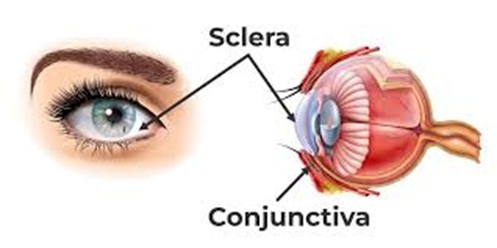When preparing to examine a client's sclera and conjunctiva during an eye examination, the nurse should instruct the client to move both eyes to look in which direction?

Down
To the left
To the right
Up
The Correct Answer is D
Choice A Reason:
Looking down does not typically expose the sclera and conjunctiva for examination. The lower eyelid covers more of the sclera when the eyes are directed downward, making it less accessible for observation.
Choice B Reason:
Moving the eyes to the left is not the standard direction for examining the sclera and conjunctiva. This movement would not provide an optimal view of the entire sclera and conjunctiva, as it would only stretch the lateral part of the conjunctiva.
Choice C Reason:
Directing the eyes to the right, similar to moving them to the left, does not offer the best exposure for examining the sclera and conjunctiva. The medial part of the conjunctiva would be stretched, but the rest would not be easily visible.
Choice D Reason:
Instructing the client to look up is the correct procedure when examining the sclera and conjunctiva. By looking upward, the client exposes more of the sclera and the palpebral conjunctiva, allowing the nurse to inspect these areas thoroughly for any abnormalities such as redness, swelling, or foreign bodies.
Nursing Test Bank
Naxlex Comprehensive Predictor Exams
Related Questions
Correct Answer is C
Explanation
Choice a reason:
The left temporal bone would be the expected site of lateralization for sound in a Weber test if the patient had conductive hearing loss in the left ear. However, with unilateral sensorineural hearing loss, the sound typically lateralizes to the opposite ear, which is the ear with better hearing.
Choice b reason:
Lateralization to both ears equally during the Weber test would suggest either normal hearing or symmetrical hearing loss. In the case of unilateral sensorineural hearing loss, the sound is not perceived as equal in both ears because the affected ear does not hear as well as the unaffected ear.
Choice c reason:
In a patient with unilateral sensorineural hearing loss in the left ear, the Weber test will lateralize to the right ear, which is the ear with normal hearing. This occurs because the inner ear on the affected side is not able to transmit the sound as effectively as the unaffected side, making the sound seem louder in the ear with better hearing.
Choice d reason:
Lateralization to the left ear in the Weber test would indicate conductive hearing loss in the left ear, not sensorineural hearing loss. In sensorineural hearing loss, the sound vibrates to the ear with better cochlear function, which would be the right ear in this case.
Correct Answer is D
Explanation
Choice a reason:
Bronchovesicular sounds are normal breath sounds heard over the main bronchus area and over the upper right posterior lung field. They have a medium pitch and intensity and are heard on both inspiration and expiration. Bronchovesicular sounds do not involve the change of vowel sounds during auscultation.
Choice b reason:
Bronchophony is the term used when the voice sounds are more clear and louder over the chest wall, usually indicating lung consolidation. However, it does not specifically refer to the change of vowel sounds from "ee" to "ay."
Choice c reason:
Normal voice resonance is when voice sounds heard through auscultation are muffled and indistinct. It does not involve a clear change in vowel sounds, which is what occurs with egophony.
Choice d reason:
Egophony is characterized by the change of the "ee" vowel sound to a nasal "ay" or "a" sound when auscultating the lungs. This phenomenon typically suggests lung consolidation, as might be seen with pneumonia.
Whether you are a student looking to ace your exams or a practicing nurse seeking to enhance your expertise , our nursing education contents will empower you with the confidence and competence to make a difference in the lives of patients and become a respected leader in the healthcare field.
Visit Naxlex, invest in your future and unlock endless possibilities with our unparalleled nursing education contents today
Report Wrong Answer on the Current Question
Do you disagree with the answer? If yes, what is your expected answer? Explain.
Kindly be descriptive with the issue you are facing.
